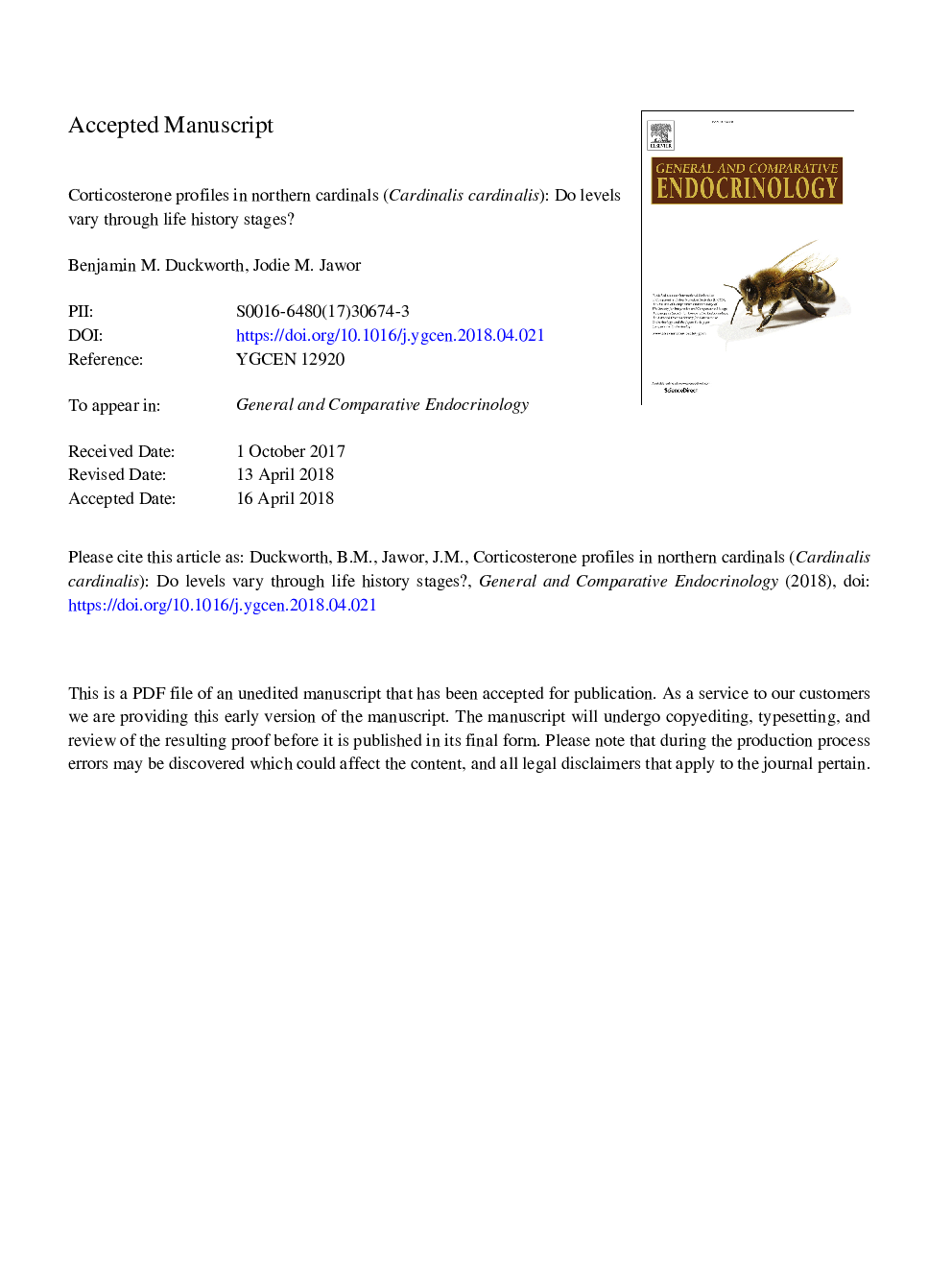| Article ID | Journal | Published Year | Pages | File Type |
|---|---|---|---|---|
| 8630863 | General and Comparative Endocrinology | 2018 | 30 Pages |
Abstract
As animals move through life history stages, energy requirements for each stage will vary. Both daily and annual variation in the glucocoriticoid hormones (specifically corticosterone, or CORT, in birds) helps provide the variable energy needed through life history stages. In many bird species, CORT is higher in the breeding season when energy demands can be quite high and is often lower in the non-breeding season. Additionally, CORT has a role to play in the response to stressful stimuli and the level to which CORT is elevated following stressful events can vary through the annual cycle as well. Here we report on baseline and stress-induced CORT levels in both sexes of northern cardinals, Cardinalis cardinalis, a non-migrating, year-round territorial species across life history stages. Corticosterone is overall higher in the non-breeding season than the breeding season in both sexes. Males tend to have higher levels of stress-induced CORT than females, although the observed patterns are complex. Our findings differ from one of the more common profile reported in songbirds where breeding season CORT tends to be higher than non-breeding levels. A strong influence may be the prolonged breeding season seen in cardinals; lower levels of CORT during breeding may guard against adverse maternal effects, interruptions in breeding behaviors, or egg production. Additional investigation of species with similar ecologies to northern cardinals, and more populations of cardinals, may show that annual glucocorticoid profiles are more labile than previously appreciated.
Keywords
Related Topics
Life Sciences
Biochemistry, Genetics and Molecular Biology
Endocrinology
Authors
Benjamin M. Duckworth, Jodie M. Jawor,
